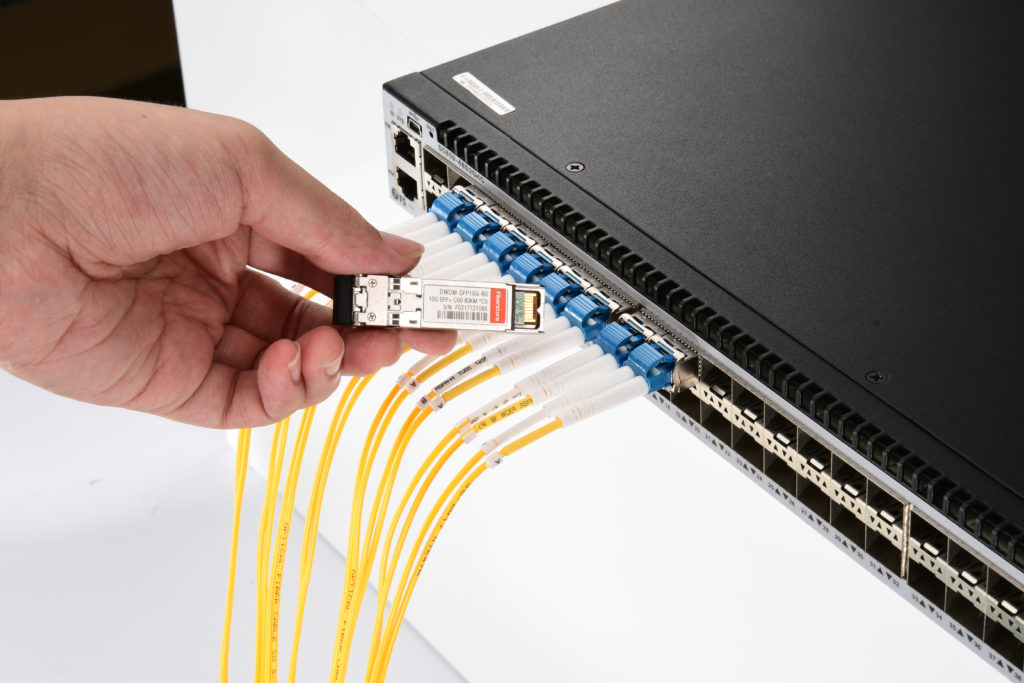A compact hot plug fiber optic transceiver, the Small Form-Factor pluggable SFP module is used in fiber optic communications for telecommunication and data communications applications. SFP is the interface between a network device mother board and a fiber optic or copper cable network cable.

The SFP module is able to support Gigabit Ethernet, fiber channel, SONET, and a number of other communications standards. For your information that in the near future, SFP will expand to the SFP+. At the time, the data rate in 10 Gbit/s is a chievable, including 8 billion fiber channel. Compared to Xenpack or XFP type of modules, all of their circuitry inside, an SFP+ module leaves some of its circuitry to be implemented on the host board.
There is a huge change in the optical transciever is a vailable, each with different transmitter or receiver. This allows the user configure and customize the transceiver to get the proper optical reach with either a multimode fiber or single mode fiber type. In addition, the optical SFP module comes in four categories -SX, which is 850nm, LX, which is 1310nm, ZX, which is 1550nm and DWDM. All of them have an interface of a copper cable which permits a mother board to communicate via USTP (unshielded twisted-pair) cable network. There are also a coarse wavelength division multiplexing and two-way optical fiber cable, single mode 1310/1490 nm upsteam and downstream.
Actually available, the SFP module has the capability transfer rates of up to 4.25 Gbit/s. XFP, a form factor which is virtually identical to the SFP type, increases this amount by nearly three times, at 10Gbit/s. The SFP transceiver is specified and made compatible via a multi-source agreement (MSA) between manufacturers, so that different users who may use equipment from different manufacturers and provides can work effectively and smoothly without worrying about errors and inconveniences.
The GBIC interface is the precursor to the SFP, hence it’s nicknamed as mini gbic. However, the SFP module allows greater port density (number of transceivers per inch along the edge of a mother board) than the GBIC. Also exist the identical Small Form-Factor (SFF) transceiver which is about similar size as the SFP. Rather than plugged into an edge-card socket, it is directly attached to the mother board as a pin through-hole device.
Digital optical monitoring (DOM) or digital diagnostics monitoring (DOM) funcations are supported by the modern optical SFP transceiver according to the industry specifications of the SFP-8472 MSA. The user has the ability to constantly monitor real-time parameters of the SFP, such as optical input/outp power, supply voltage and laser bias current because of this feature.
That have been said, I’m very glad to know that optical transceiver is a very popular format, it is recommended to use a considerable amount of fiber optic component suppliers. These companies carry SFP transceivers for all Cisco devices together with transceiver modules for many other manufacturers. So, if you need technology solutions for your networking applications, you now know what to look for.
